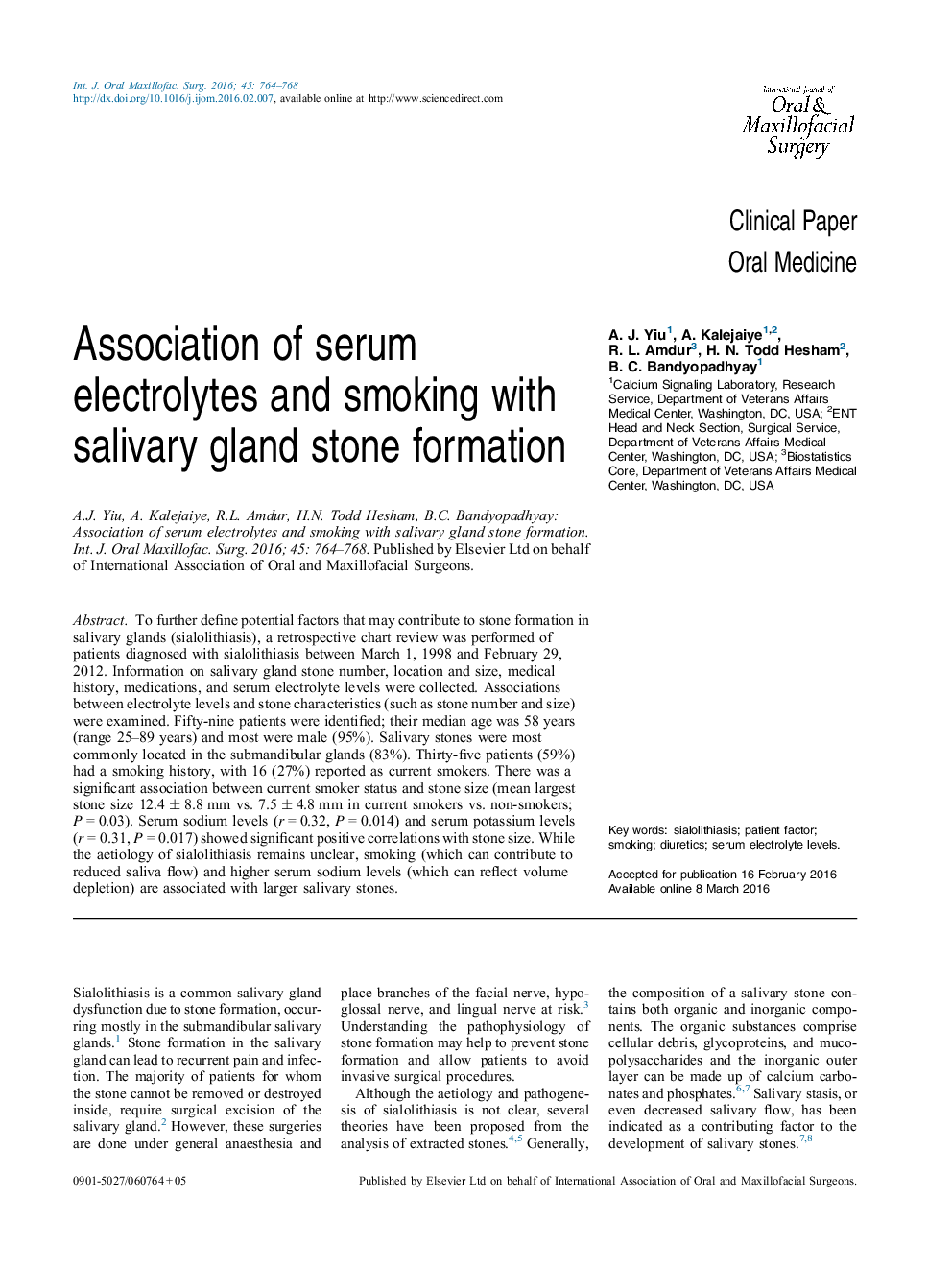| کد مقاله | کد نشریه | سال انتشار | مقاله انگلیسی | نسخه تمام متن |
|---|---|---|---|---|
| 3131780 | 1584116 | 2016 | 5 صفحه PDF | دانلود رایگان |
To further define potential factors that may contribute to stone formation in salivary glands (sialolithiasis), a retrospective chart review was performed of patients diagnosed with sialolithiasis between March 1, 1998 and February 29, 2012. Information on salivary gland stone number, location and size, medical history, medications, and serum electrolyte levels were collected. Associations between electrolyte levels and stone characteristics (such as stone number and size) were examined. Fifty-nine patients were identified; their median age was 58 years (range 25–89 years) and most were male (95%). Salivary stones were most commonly located in the submandibular glands (83%). Thirty-five patients (59%) had a smoking history, with 16 (27%) reported as current smokers. There was a significant association between current smoker status and stone size (mean largest stone size 12.4 ± 8.8 mm vs. 7.5 ± 4.8 mm in current smokers vs. non-smokers; P = 0.03). Serum sodium levels (r = 0.32, P = 0.014) and serum potassium levels (r = 0.31, P = 0.017) showed significant positive correlations with stone size. While the aetiology of sialolithiasis remains unclear, smoking (which can contribute to reduced saliva flow) and higher serum sodium levels (which can reflect volume depletion) are associated with larger salivary stones.
Journal: International Journal of Oral and Maxillofacial Surgery - Volume 45, Issue 6, June 2016, Pages 764–768
